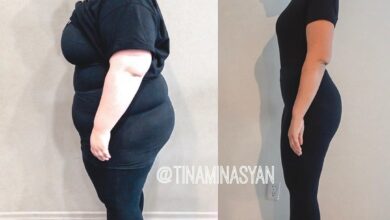
So You Want to Start Fitness Walking?
So you want to start fitness walking? It’s a fantastic choice! Walking is an accessible and effective way to improve your fitness, lose weight, and boost your overall health. It’s gentle on your joints, requires minimal equipment, and can be done almost anywhere.
This guide will walk you through everything you need to know to get started, from choosing the right shoes to finding motivation and staying safe.
We’ll cover the basics of getting started, including setting realistic goals, creating a walking schedule, and finding safe and enjoyable routes. We’ll also delve into proper walking technique, including posture, arm swing, and stride length. You’ll learn how to progress gradually, incorporate different types of walking, and add variety to your routine to prevent boredom.
And of course, we’ll address safety and health considerations, including hydration, rest days, and potential risks. Finally, we’ll explore resources and support systems that can help you stay motivated and on track.
Safety and Health Considerations: So You Want To Start Fitness Walking
Fitness walking is a fantastic way to improve your health and well-being, but it’s crucial to prioritize safety and listen to your body. By taking the necessary precautions, you can enjoy a safe and fulfilling walking experience.
So you want to start fitness walking? It’s a fantastic way to improve your overall health, and it’s gentle enough for most people to do. Did you know that studies link poor sleep with cardiovascular disease ? Regular walking can actually help you sleep better, which in turn can reduce your risk of heart disease.
It’s a win-win situation!
Staying Hydrated
Staying hydrated is essential for maintaining your body’s optimal performance during walks, especially in warmer weather. Dehydration can lead to fatigue, dizziness, and even heat exhaustion. Here are some tips for staying hydrated:
- Drink water before, during, and after your walk. Aim for at least 8 ounces of water every 20 minutes.
- Carry a water bottle with you and refill it regularly. You can also consider using a hydration pack or belt for easier access.
- Avoid sugary drinks, as they can dehydrate you.
- Listen to your body and drink water when you feel thirsty.
Listening to Your Body and Rest Days
Your body needs time to recover after exercise, so it’s important to listen to your body and take rest days. Pushing yourself too hard can lead to injury and burnout.
Fitness walking is a great way to get moving, but don’t forget about strengthening your core! A strong core is essential for good posture, balance, and injury prevention, which are all crucial for a successful fitness walking routine. To get started, try your 10 minute no equipment core workout a few times a week.
You’ll be surprised how much a few minutes of dedicated core work can improve your overall fitness and walking experience.
- Pay attention to any aches, pains, or discomfort you experience during or after your walks. If you experience any sharp or persistent pain, stop walking and consult with a healthcare professional.
- Rest for at least one day a week to allow your body to recover and rebuild muscle.
- Listen to your body’s signals. If you feel tired, fatigued, or sore, take a break or shorten your walk.
Potential Risks and Precautions
While fitness walking is generally safe, there are some potential risks to be aware of and precautions to take:
- Foot and Ankle Injuries: Improper footwear or walking on uneven surfaces can lead to foot and ankle injuries. Wear supportive and comfortable shoes that fit well. Avoid walking on uneven or slippery surfaces, and consider using walking poles for added stability.
- Overuse Injuries: Walking for too long or too intensely without proper rest can lead to overuse injuries. Gradually increase your distance and intensity, and listen to your body’s signals.
- Heat Exhaustion and Heat Stroke: Walking in hot weather can lead to heat exhaustion or heat stroke. Wear light-colored clothing, stay hydrated, and avoid walking during the hottest part of the day.
- Safety in Your Environment: Be aware of your surroundings, especially when walking alone. Walk in well-lit areas, avoid walking in isolated areas, and consider carrying a personal safety device.
Resources and Further Information

It’s great that you’re excited to start fitness walking! There are many resources available to help you get started and stay motivated. This section will guide you to valuable information, tools, and communities that can enhance your fitness walking journey.
Reputable Resources for Fitness Walking Information, So you want to start fitness walking
Finding reliable information is crucial for safe and effective fitness walking. Here are some reputable resources:
| Resource | Description | Link |
|---|---|---|
| American Council on Exercise (ACE) | Provides comprehensive information on fitness walking, including technique, benefits, and workout plans. | https://www.acefitness.org/ |
| National Walkers | A non-profit organization dedicated to promoting walking for health and fitness. | https://www.nationalwalkers.org/ |
| Walking for Health | A UK-based organization offering resources and guidance on walking for health and well-being. | https://www.walkingforhealth.org.uk/ |
Apps and Websites for Tracking Progress and Motivation
Tracking your progress can be motivating and help you stay accountable. There are many apps and websites that can help you track your walking distance, time, and calories burned.
- MapMyWalk:A popular app that allows you to track your walks, view your progress, and set goals. It also provides social features, allowing you to connect with friends and family.
- Fitbit:A comprehensive fitness tracker that can monitor your steps, distance, calories burned, and sleep patterns. It integrates with other apps and devices.
- MyFitnessPal:A calorie-counting app that can also track your walking activity and provide personalized recommendations.
- Strava:An app designed for athletes, but it’s also great for tracking walks. It allows you to compete with friends and see your progress on a map.
Local Walking Clubs and Events
Joining a walking club or participating in walking events can be a great way to meet new people, stay motivated, and explore new areas.
- Check with your local parks and recreation department:They often offer walking programs and events.
- Search online for “walking clubs” or “walking events” in your area:Many websites and social media groups connect walkers in local communities.
- Contact your local YMCA or community center:They may offer walking groups or programs.
Outcome Summary
Starting a fitness walking routine can be a transformative experience. You’ll not only improve your physical health but also enjoy the mental and emotional benefits of spending time outdoors. Remember to listen to your body, set realistic goals, and celebrate your progress along the way.
With dedication and a positive attitude, you’ll soon be reaping the rewards of fitness walking. So lace up your shoes, grab your water bottle, and get ready to experience the joy of walking your way to a healthier you!
So you want to start fitness walking? It’s a great way to get moving and improve your health, and the best part is, you don’t need to be a seasoned athlete to reap the benefits. In fact, a recent study found that walking can help you live longer even if you’ve never exercised before.
Whether you’re a complete beginner or looking to boost your existing routine, fitness walking is a fantastic option. Just lace up your shoes, head outside, and enjoy the journey!






